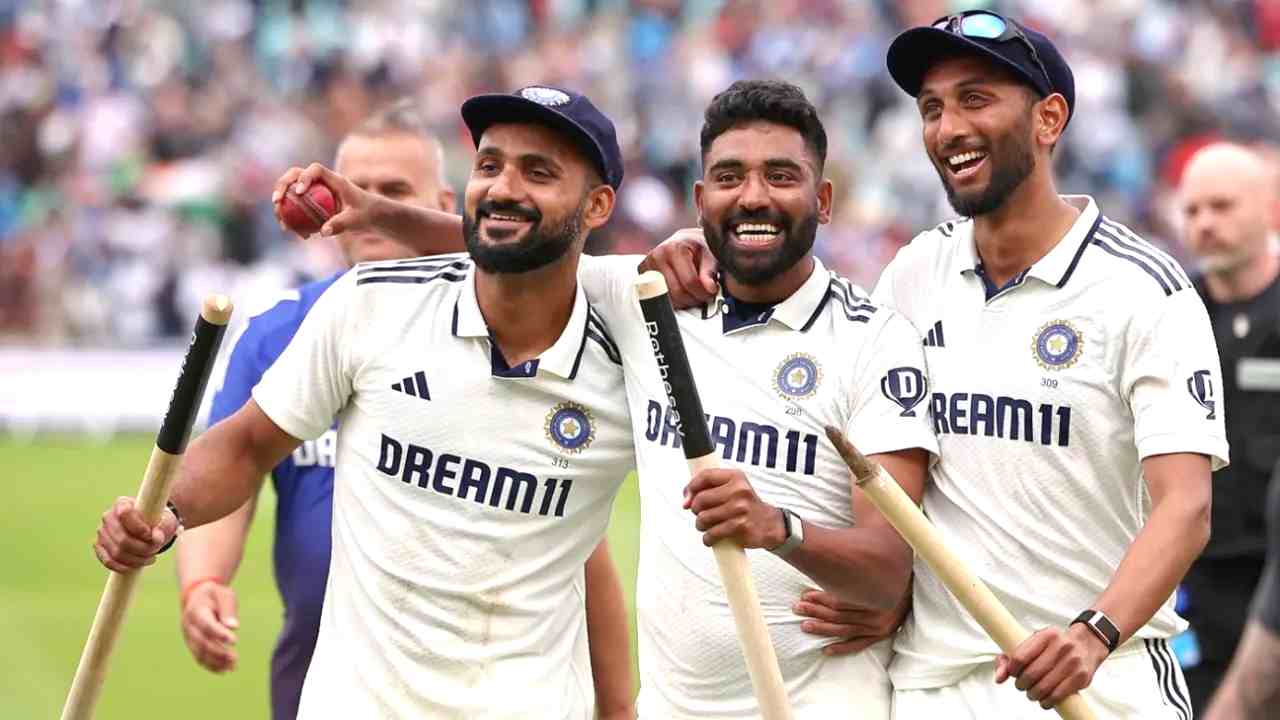Team India’s pace depth crisis: Why BCCI should broaden the fast-bowling talent pool? Do India have sufficient back of the fast bowlers?

It was in March last year when the BCCI took an interest in a new category of ‘Fast Bowlers Contract’ to show their strategic thinking for the future. But sadly, they haven’t got results in two vital trips in seven months. It has been the same set of bowlers who, by the end of the series, become physically cooked and lose pace significantly.
The groundbreaking initiative aimed to offer the players special training and access to rehabilitation at the NCA. It was a sign of the board’s dedication to the country’s success in the longest format. Fast bowling is always a hard job in any format of the game. But to run with the same intensity in the opening morning session and to continue it with the same energy and rhythm till the 15th session makes it even harder.
Read More: BCCI’s Fast Bowling Contract carves path for a thriving Pace Bowling Future
BCCI’s lack of planning around building fast bowling pool
The issue for the Blue Brigade has never been in home Tests. Apart from their red-ball series defeat against New Zealand last year, they had been tremendously successful in the previous decade. Even during the series defeat, it was their batters who lacked runs. The spinners did their job.
The entire focus remains when the team travels abroad. That’s where the fast bowlers have to deliver with the new ball. Even when the ball gets old, they have to bring various skills like the short ball tactics or reverse swing to create chances. To tackle the Australian, England, and South Africa batters in their conditions, pace becomes crucial.
Bowlers with an average speed under 130 will hardly create pressure on different surfaces. It can be useful when the ball swings, but even if it does, the modern batters can use their power to nail the big shots to release the pressure. It’s vital to have both pace and swing, and that’s why Jasprit Bumrah is the premier pacer in world cricket right now.
The BCCI has everything to create more opportunities for the upcoming fast bowlers. At the end of the day, pace bowling is a different art. Injuries are part and parcel of any pacer’s career, and that’s why managing them in the off-season becomes crucial. However, they will need to have a set of around six to eight pacers, who would always be prepared to play and contribute in any condition.
Preserving becomes quite crucial. Once a player gets dropped, the most important aspect when he returns is not to check their records. It’s essential to see if they have worked on the concerned areas for which he was left out. And that’s where BCCI has to play a role in strengthening their fast bowlers.
Meanwhile, they can also send some scouts to the Ranji Trophy games and pick the desired skills for the Test tours of the future. Once they select them, then they can nurture them in the NCA with proper care of dieting and workload management. India’s lack of new fast bowlers in the last five years has come back to haunt them on several occasions in SENA Test trips.
Read More: Why is India’s bowling coach Morne Morkel not producing results like his predecessor Bharat Arun?
BCCI needs to take vital steps in building India’s pace bowling backups
If they had had various skillful pace options in this recently concluded England trip, they could have easily rotated them. In the past, under Virat Kohli, the management used to have Umesh Yadav mostly at home. The Vidarbha bowler, with his expressive pace, proved to be challenging in India.
Mohammed Siraj ended with 185.3 overs in the last seven weeks in England. He didn’t pick up any injury, but there is no guarantee that he won’t in the future. If one pacer keeps bowling so many overs in a series without ample breaks, they will eventually break down at some point. This is where the BCCI is lagging behind.
With plenty of money, they have to figure out the path to producing a huge batch of pacers. Even in the all-rounder’s department, they are yet to find a proper pace bowling all-rounder for the SENA Tests. Nitish Reddy got injured after the third Lord’s Test. However, as a backup, they had Shardul Thakur. Who else after him? If the Mumbai-born picks up a sudden niggle, then they will have to tinker with the balance of the side.
It’s a simple strategy. The scouts just need to find the young pacers for the future. Later, the management will need to work on their fitness and strength building.
Tushar Despande, Mayank Yadav, Umran Malik, Vijaykumar Vyshak and Yash Dayal, reportedly, signed the contract last year. But unfortunately, none of them are in the present scheme of things. None of these pacers are prepared to straightaway play for the national side and leave a mark.
It’s hard to fathom the fact that the BCCI, even with all the money, has failed to build a fast bowling pool, even with the pace bowling contract. They don’t have many options either in the fast bowling all-rounders. And as a result, they have to repair the combinations. All of these are the fine differences between winning and drawing an away Test series.
Read More: Why India need to worry about strengthening their bowling attack to take 20 wickets